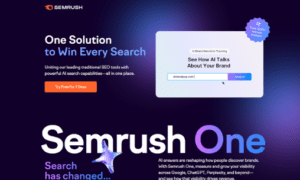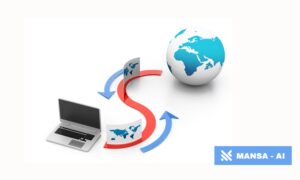ERP systems have traditionally been considered a privilege of large corporations. Oleksandr Vasyliev decided to change that. In this TechBullion interview, he talks about how he created a product accessible to small businesses, and why simplification is actually the hardest part of technology.
Oleksandr, how did you come up with the idea to create an ERP solution specifically for small businesses?
Small business is not just a market segment, it’s the very starting point of my own career and, paradoxically, a space where the most basic problems still remain unsolved. For decades, I have watched small companies face the same obstacles over and over again: expensive solutions, complicated interfaces, lack of support, and incompatibility with the tools they already use, from Excel to QuickBooks.
At some point, I realized that the technologies used by corporations for logistics and management were technically accessible to small businesses as well, but no one had adapted them for this segment. That’s when I decided: if no one is building ERP for people who work and manage multiple processes manually, I will do it myself.
I wanted to create a system not about “digital transformation for the sake of transformation,” but about real help for business, so that any entrepreneur could control warehouse operations, sales, and finances literally from their phone, without an IT department or a budget of tens of thousands of dollars.
In your opinion, what prevents small companies from adopting traditional ERP systems?
First and foremost, complexity. ERP systems are often designed for large enterprises: they have budgets, IT teams, project managers, and time for implementation. Small businesses don’t have that. They usually have one person who does everything, purchasing, sales, shipping, and accounting. And when that person hears “implementation will take three months,” they simply walk away.
The second issue is the cost of ownership. Even if the solution seems affordable, it comes with hidden expenses, external integrators, consultations, training, servers. This turns ERP into an overwhelming project.
The third, fear of change. Many small businesses rely on “human crutches”: notebooks, Excel sheets, and the personal knowledge of key employees. Offering them a new system means asking them to abandon everything familiar. And large ERPs don’t inspire confidence, their interfaces look like airplane cockpits.
That’s why traditional systems simply aren’t suited to the realities of small business. And small business isn’t ready to live by the rules of those systems. The solution is not to adapt users to the system, but to adapt technology to the user’s habits, limitations, and needs. That’s the idea behind Log-Uno.
What key decisions allowed you to make ERP more affordable without sacrificing quality?
The most important decision was to remove everything unnecessary and keep only what delivers value here and now. Most ERP systems try to be “everything for everyone”, and that’s exactly why they become heavy, expensive, and confusing. I went in the opposite direction: to make the system modular, so a company could start with the basics, warehouse, orders, finances, and then add more features as it grows.
The second, the SaaS model. We abandoned installations and servers. Everything runs in the cloud; nothing needs to be “set up” or “updated.” This saves clients money, time, and nerves.
The third, independence from integrators. We made it so that entrepreneurs can launch the system themselves within one or two days, without intermediaries. The interface includes step-by-step guides, built-in help, and document templates. Simplicity is our top priority.
The fourth, deep integration with familiar services. Log-Uno connects “out of the box” with QuickBooks, Shopify, Amazon, PayPal, and ShipStation. In other words, the system adapts to the client, not the other way around.
How did you approach interface design to make the system intuitive even for non-technical users?
From the very beginning, I asked myself a simple question: what would an ERP system look like if it were designed not by programmers, but by a salesperson, a warehouse worker, and an accountant together? The answer, it would be intuitive. No unnecessary buttons, only clear labels.
We studied how people actually work, how they think, what words they use, what fears and habits they have. For example, if a user thinks in terms of “incoming stock,” “balance,” or “customer order,” then the interface should speak that same language, not bombard them with corporate system abbreviations.
We conducted interface tests with “unprepared” users, and if someone couldn’t figure out what to do on the screen within 10 seconds, we redesigned it. Sometimes we had to give up elegant solutions in favor of more straightforward ones, because the goal wasn’t to impress with design, but to eliminate fear of the system.
In Log-Uno, there’s no “training” in the traditional sense. We don’t assume that users will watch a course. They just log in and start working. If they can’t, that means we did something wrong.
We also added smart hints, automatic templates, and built-in workflows for typical scenarios. The system guides users step-by-step. It’s not just an interface, it’s an invisible assistant.
What was the most challenging aspect of working with small businesses compared to large companies?
The hardest part is earning trust. Small businesses don’t have a safety margin, every mistake costs them money, time, and stress. That’s why they approach anything new with caution, especially technology they don’t feel confident with.
In large companies, there are specialists responsible for implementation. They have time for testing and budgets for pilot projects. In small businesses, everything depends on one person. And if you don’t explain things clearly or show real value, you simply don’t get a second chance.
The second challenge is time constraints. People are busy. They don’t have the bandwidth to “figure out a system” for a week. So we had to make Log-Uno fast, simple, and ready to use, without lengthy setups or complicated configurations.
The third, fear of automation. Many worry that “the system will make things more complicated” or “break what already works.” That’s why it’s crucial to show that we’re not here to replace everything, but to help them keep control, improve processes, and work faster.
And finally, small business is not about theory, it’s about practice. They don’t care how the system is built inside. They care that orders go out on time, the numbers in the register add up, and they don’t need to call a programmer every time something goes wrong.
I realized that success here isn’t about technology, it’s about language. The simpler you explain things and the closer you are to their reality, the more likely they are to trust you.
What real effects have you seen among clients after implementing Log-Uno?
The most inspiring thing is when people who used to run their business in notebooks or Excel suddenly say: “Now I see everything online, in one interface, and I can finally sleep peacefully.” It’s not about numbers, it’s about the feeling of control.
We’ve had cases where order processing speed increased by 30–50% within the first week. Why? Because the phone calls, back-and-forth messages, and paper errors disappeared. Everything became transparent: here are the orders, here are the inventories, here’s who’s doing what.
One of our clients, a pet supplies online store, shared that after implementing Log-Uno, they were able to handle the peak season without hiring temporary staff for the first time. The system simply took over repetitive tasks, from document printing to pick-up notifications.
Another example is a small manufacturing company that used to get confused with batches and expiration dates. After implementing address-based storage and FEFO logic in Log-Uno, their write-offs dropped nearly to zero.
Many clients note that business transparency has increased dramatically. The owner can log in anytime to see how much stock is available, the status of orders, and how much revenue was made today. This brings not just control, but confidence in tomorrow.
And of course, the most common feedback is: “Why didn’t I do this earlier?”
If we look to the future, what role do you see ERP playing in the development of microbusinesses and new entrepreneurs?
I believe ERP systems will become as essential to business as cash registers once were. They’ll just be different, smarter, lighter, and accessible from day one.
In the past, ERP was about control after growth. Now it’s a tool for rapid startup and scaling. If you’re an entrepreneur, you don’t want to waste time compiling spreadsheets, searching for stock, or sorting invoices. You want to see the full picture, make decisions, and move forward.
The future of ERP is pain-free automation. Systems shouldn’t complicate, they should simplify. They should help you run your business from your phone, think for the user, predict, guide, and operate 24/7 without an IT department.
This is especially vital for microbusinesses and first-time entrepreneurs. They have no one to delegate to, they need a system that works like a co-founder: one that doesn’t interfere, doesn’t demand, but helps and supports.
My goal is for entrepreneurs to stop fearing the word “ERP” and to see it as a reliable tool, like an accountant or a courier. For digital infrastructure to become not a barrier, but a springboard.
And if Log-Uno helps even a thousand businesses take that step, then it was all worth it.



































